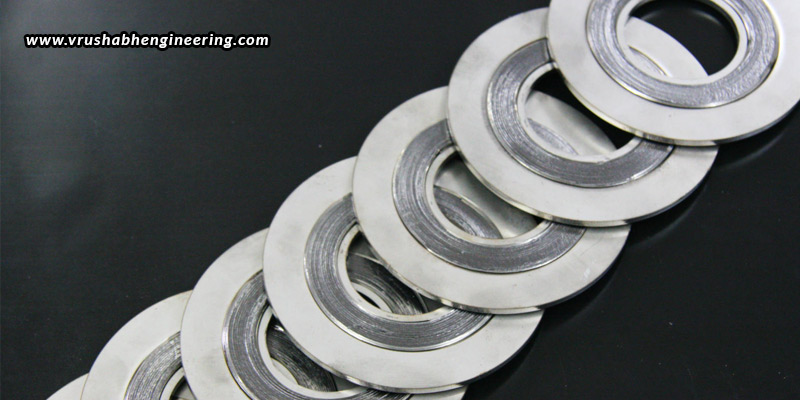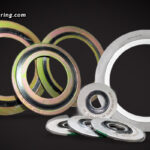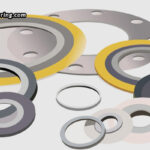- 1win aviator
- mosbet casino
- pin up
- pinup casino
- mostbet casino
- 1 vin
- mostbet casino
- mostbet uz casino
- pin up casino
- mosbet
- mostbet az
- mostbet casino
- pin up
- mostbet
- mosbet casino
- mostbet
- mostbet uz online
- mostbet kz
- mostbet
- pinco casino
- lucky jet casino
- pin up uz
- 1vin casino
- pinco
- pinko casino
- snai casino it
- mostbet uz
- mostbet online
- 1win az
- 4a bet
- 1win bonus
- pinap
- 1win casino
- mosbet casino
- pinko
- pin-up
- pinco casino
- pin up casino
Gaskets play a vital role in industrial systems by providing leak-proof seals in pipelines, boilers, and processing equipment. However, they face considerable stress under extreme conditions, such as elevated temperatures and pressures, which can lead to failures that result in expensive downtime, safety risks, and operational inefficiencies. It is essential to choose the appropriate gasket material and design to ensure reliability in these challenging environments. This blog addresses the difficulties associated with high-temperature and high-pressure applications and offers guidance on the selection, installation, and maintenance of gaskets under extreme conditions.
Challenges of high-temperature applications
- Material degradation due to heat
Elevated temperatures can compromise gasket materials, diminishing their sealing capabilities over time. Gaskets made from rubber and fiber tend to harden and crack with extended exposure to heat, while elastomers may soften and lose their original shape. The process of thermal oxidation further accelerates material deterioration, ultimately reducing the lifespan of the gasket.
- Thermal expansion and contraction
Gaskets undergo expansion and contraction in response to temperature changes, which can induce material stress and lead to leaks. Continuous thermal cycling can result in seal fatigue, and high temperatures may cause the gasket to relax, thereby decreasing compression and sealing efficiency over time.
- Exposure to high-temperature chemicals
In industrial processes involving steam, hot gases, or corrosive fluids at elevated temperatures, gaskets can be weakened, leading to a loss of strength, degradation, or even dissolution over time.
Challenges of high-pressure applications
- Gasket blowout risks
High-pressure systems apply significant force on gaskets, which can lead to rupture or displacement if the gasket does not possess adequate strength. Key factors contributing to this issue include insufficient bolt load, where uneven or inadequate tightening results in gaps in the seal, and material failure, where gaskets not designed for high pressure may compress excessively or extrude.
- Compression set and creep
Prolonged exposure to pressure can cause gasket materials to lose their elasticity, hindering their ability to return to their original shape after compression. This leads to a deterioration of seal integrity, as gaskets become permanently deformed, thereby increasing the likelihood of leaks as fluids or gases escape due to the gasket’s inability to regain its initial form.
Best gasket materials for high-temperature and high-pressure applications
Metal gaskets
Metal gaskets represent the most robust option for extreme temperature and pressure conditions. Ring-Type Joint (RTJ) gaskets, constructed from stainless steel or Inconel, form a metal-to-metal seal suitable for high-pressure applications. Metal-jacketed gaskets consist of a soft filler core encased in a metal outer layer, providing exceptional resistance to temperature and pressure. Corrugated metal gaskets offer a combination of flexibility and strength, making them effective for applications involving thermal cycling.
Graphite gaskets
Flexible graphite gaskets can endure temperatures exceeding 500°C while retaining excellent sealing capabilities. Unlike rubber or fibre gaskets, graphite remains resilient under heat, avoiding hardening or cracking. Furthermore, its robust chemical resistance makes it an ideal choice for sealing steam, hot oils, and aggressive chemicals.
Spiral-wound gaskets
Spiral-wound gaskets are constructed with alternating layers of metal and filler material, resulting in a strong and adaptable seal. They can withstand pressures up to 250 bar (3625 psi) and effectively manage thermal expansion, accommodating minor flange movements during heating and cooling cycles.
PTFE gaskets
PTFE (Teflon) gaskets provide outstanding performance at high temperatures while resisting chemical degradation. With a temperature tolerance of up to 260°C (500°F), they remain stable under heat. Their low creep characteristics minimize significant compression set, ensuring a dependable seal under high-pressure conditions.
Industry applications for high-temperature and high-pressure gaskets
- Oil and gas industry: RTJ gaskets are utilized in high-pressure pipelines and drilling activities, whereas graphite and metal-jacketed gaskets effectively prevent leaks in high-temperature processing facilities.
- Power plants and steam systems: Graphite and spiral-wound gaskets are crucial for sealing boilers and connecting turbines, while metal gaskets endure the extreme heat present in steam systems.
- Chemical processing plants: PTFE gaskets are employed for the transport of corrosive chemicals at elevated temperatures, while metal-jacketed gaskets safeguard against pressure fluctuations in reactors and heat exchangers.
- Aerospace and automotive engineering: Metal-reinforced gaskets are designed to seal high-pressure fuel and exhaust systems, while spiral-wound gaskets offer durability for engine components subjected to severe heat and pressure.
Selecting the right gasket for high-temperature and high-pressure applications is critical for maintaining system reliability, safety, and efficiency. For example, metal, graphite, and spiral-wound gaskets deliver optimal performance in extreme conditions, providing resistance to heat, pressure, and thermal cycling. For professional guidance on high-performance gaskets, reach out to Vrushabh Engineering today. Our selection of specialized gaskets guarantees effective sealing solutions for applications involving extreme temperatures and high pressures, making us the most versatile industrial gaskets manufacturer in India.






